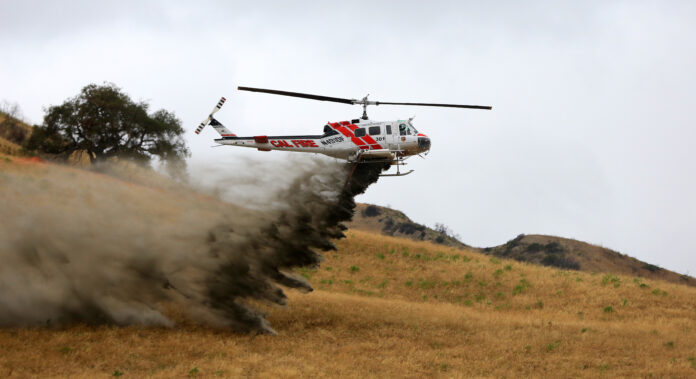“California wildfire seasons, unfortunately, are turning into wildfire years,” said Carmel Valley Rep. Jimmy Panetta in a recent press release.
Panetta, along with two senators and 20 other members of Congress from California, called for the creation of a year-round wildland fire workforce in a recent letter to U.S. Secretary of Agriculture Tom Vilsack and U.S. Secretary of the Interior Deb Haaland.
The legislators who signed on, including North Coast Rep. Jared Huffman, want to reclassify seasonal federal firefighting positions as permanent, and expand training to include off-season prevention techniques.
“Because the federal government owns 57% of the forest land in California, and climate change all but ensures an ever-expanding fire season in the years to come, we must begin to adapt our federal resources to better align with needs on the ground,” the lawmakers wrote.
Creating a larger, year-round fire force could benefit both firefighters and ecosystems, says Stacey Sargent Frederick, coordinator for the California Fire Science Consortium.
“If you’re only seasonal, you have this really intense season, and then you might not have health benefits,” she says. Year-round positions would spread out some of that intensity and provide the benefits of full-time jobs.
This shift might help alleviate some of the burnout and mental health hazards of the profession. It could also create opportunities to advance through a career rather than work season to season.
Focusing on prevention and mitigation could also help restore healthy fire regimes.
“There’s a misconception, I think, that we can have a state without any fire,” Sargent Frederick says. California is full of ecosystems that need healthy burns.
“We think historically there was actually more acres burned in California than we’ve been seeing these last recent years,” she says. But those fires behaved differently from today’s massive blazes.
“It was a fire that would creep along and burn some small trees and burn up a lot of the dead and decaying matter on the forest floor but leave the big trees,” Sargent Frederick says.
Several of the West Coast’s indigenous peoples used this type of fire until colonizers began suppressing fire in the 1800s.
“Now, we’re dealt with this combination of climate change—which is making a lot of our conditions worse for fires—and also this fuel-management issue because we’ve taken fire out of the ecosystems,” Sargent Frederick says.
Management techniques such as controlled burns could help fix that. In comparison to the high-stress, emergency response of fire suppression, prescribed burns sometimes feel quite literally like a walk in the park.
“It’s actually kind of boring,” Sargent Frederick says. “You go, and you get all geared up and you do all this prep work. And then you just sit there and let it do its thing.”
Prevention also includes grazing, thinning, limiting ignitions and a number of other strategies, depending on location.
“It’s a combination of the right tools for the right systems,” Sargent Frederick says.
Last week, Sonoma County announced it will distribute between $2 and $4 million to local nonprofits and other organizations focused on vegetation management in high fire-risk areas. The funding is the fire-stricken county’s latest effort to reduce the threat of wildfires before they start.
With more of those tools available year-round, officials hope to make wildfire seasons safer for everyone.











